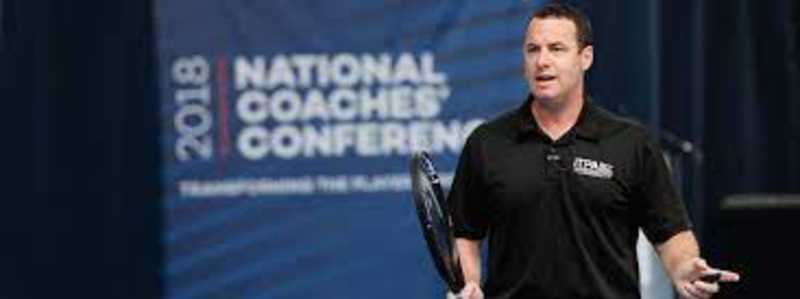Don't miss any stories → Follow Tennis View
FollowDr. Mark Kovacs Breaks Down the Serve During World Tennis Conference Presentation

When serving, the No. 1 reason for poor serves is explained by the simple phrase: “Pushing your front hip out into the court,” said Dr. Mark Kovacs, who digs deep into the physics of tennis in his role as the CEO of the Kovacs Institute based in Marietta, Ga.
Charts, graphs and videos showing the detailed movement of the service motion where the highlights of his 37-minute presentation on “Optimizing the Serve, Understanding the 8 Stages of the Serve” on Day 3 of the online World Tennis Conference. To join, click on the following link to download the free TennisONE App to register for the conference. https://t1.app.link/WTCPR
“This is one of the biggest coaching phrases that is mis-utilized,” Dr. Kovacs said. “Pushing your front hip out into the court is not an objective of a great serve. If you significantly shift your weight onto your front too early you increase your injury risk. It’s not a bad aspect of the service motion, but you need to get there correctly.”
Another phrase that is misused is to “bend you knees.” Dr. Kovacs says hardly ever does a player fail to bend their knees enough. “More often players over-bend their knees,” Dr. Kovacs said. “Then they go too low at the knee bend and get stuck at the bottom and lose energy. If you use the coaching cue of bending your knees it is not the right cue.”
Another misleading phrase is to “serve like you throw a ball.” The general motion of throwing does not mimic the motion of the serve.
“Make sure you coach fundamentals – don’t over-emphasize style,” Dr. Kovacs said. “Don’t randomly try stuff – understand the reason and the data for training. Too many times as coaches we focus on the wrong area.”
Here is the 8-stage model of the tennis serve. 1) Start, 2) Release, 3) Loading, 4) Cocking, 5) Acceleration, 6) Contact, 7) Deceleration, 8) Finish. “We know every player goes through these eight stages, but they hit certain markers quite differently,” Dr. Kovacs said. “In addition, there are three phases in the stages, which include the Prep Phase, the Acceleration Phase and the Follow-Through Phase.”
Dr. Kovacs says because each stage has a cutoff point, it is possible for coaches to analyze each stage and fix any problems. His presentation during the World Tennis Conference touches on all the stages, what the potential problems are with players, and how coaches can help their students overcome those problems.
At the Kovacs Institute he oversees the direction, testing protocols and athlete monitoring programs along with his staff. For more information visit www. kovacsinstitute.com
The online World Tennis Conference concludes Sunday, March 28, with a session headlined by Nick Bollettieri. The 89-year-old coaching icon will discuss his history of developing high-performance tennis players. To join, click on the following link to download the free TennisONE App to register for the conference. https://t1.app.link/WTCPR
All conference sessions will be archived for later viewing. Attendees will have access to all the video sessions for 30 days after the conference ends through the TennisONE App. Individual days are offered for $45 each day.










